

Last updated on

Shopping SERPs have increasingly resembled a feed rather than traditional ranked results. Back in December, I discussed how Google’s integration of the shopping tab into main search results is shifting the e-commerce landscape, making it look more like Amazon’s marketplace than standard web search.
The evolution of SERP features and query refinements is a significant driver behind this change. These elements guide users from vague searches to specific products quickly, greatly influencing clicks and revenue.
In this analysis, I examined over 28,000 shopping SERPs to understand the mechanics of query refinements and their impact on e-commerce sites.
Although it’s early for the shopping season, now is a crucial time for e-commerce businesses to prepare, especially larger ones that need time for site adjustments. If you aim for a successful 2024, it’s time to start planning and making changes.
Query Refinements, often referred to as “pills,” are filters located at the top of search results designed to help users narrow down their searches. Essentially, these refinements act as product filters.
Introduced at Google Search On 2022, Google described these refinements as dynamic, adapting in real-time to current search trends (emphasis added):
Whole page shopping filters on Search are now dynamic and adjust based on real-time Search trends. For instance, if you’re shopping for jeans, you might see filters for “wide leg” or “bootcut” if those styles are popular at the moment. These filters can change over time based on trending styles.
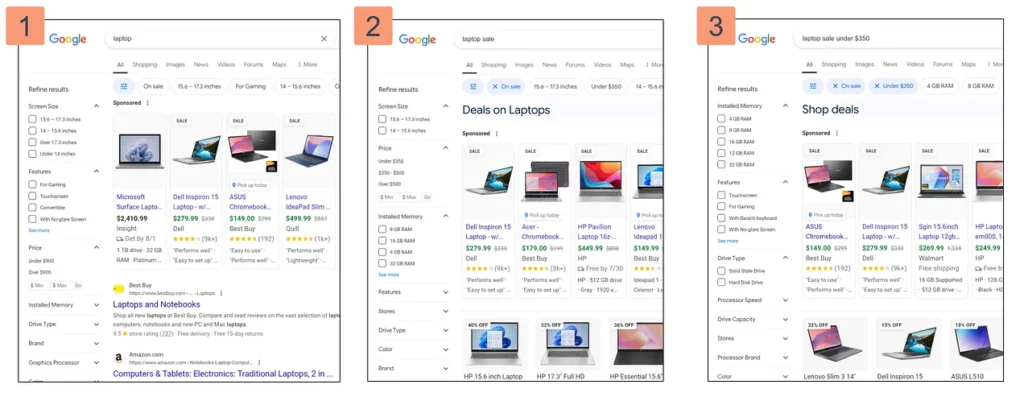
The goal of query refinements is to guide users from a broad search to a specific conversion as quickly as possible by refining their queries. Clicking on a pill leads users to a new SERP, similar to how clicking on product filters on the left side of the page works.
To better understand how query refinements operate and how e-commerce sites can leverage them, I analyzed some relevant data.
I analyzed 28,286 shopping keywords (US, desktop) using seoClarity and discovered several key insights about query refinements:
I examined which refinements appear most frequently in the top positions—specifically, positions one, two, and three. For context, position one refers to the first refinement from the left, which is the most prominent.
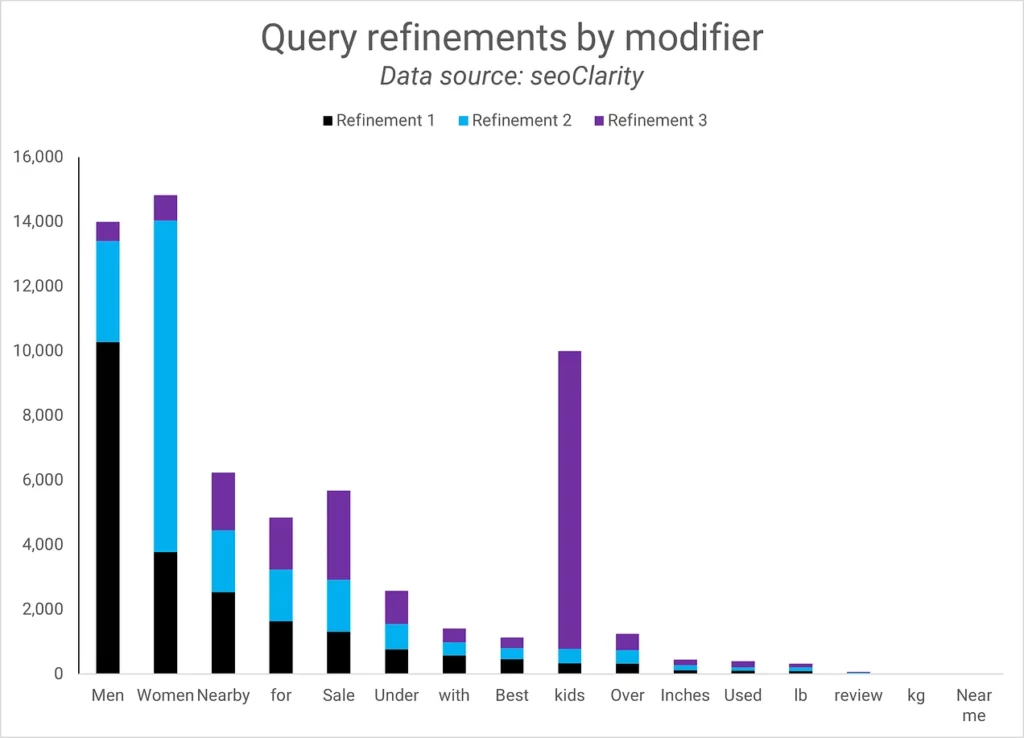
Query refinements often mirror the initial product filters found on desktops, though product filters are absent on mobile. This is likely because a sidebar filter is less practical on mobile devices.
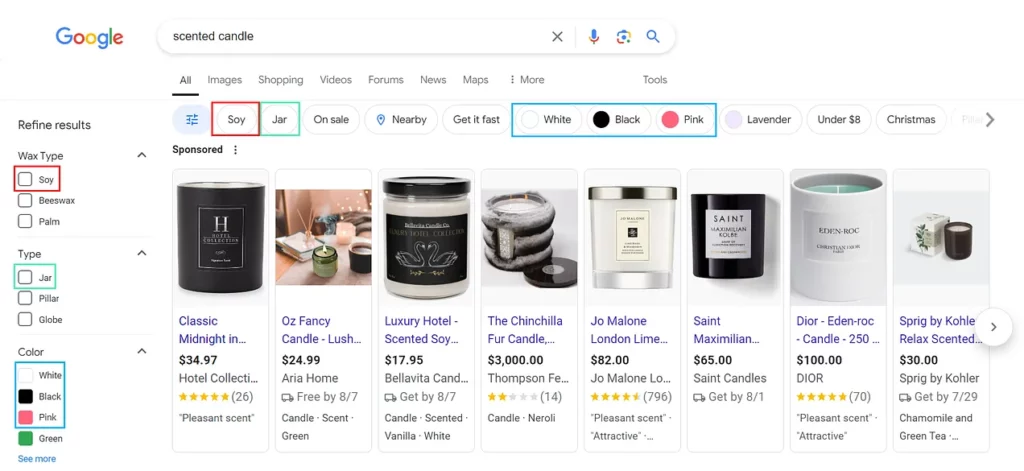
The sorting and visibility of refinements vary between mobile and desktop. Mobile search results typically display around four refinements initially, while desktops can show more than ten.
Since query refinements adapt to real-time searches, they also align closely with autosuggest results.
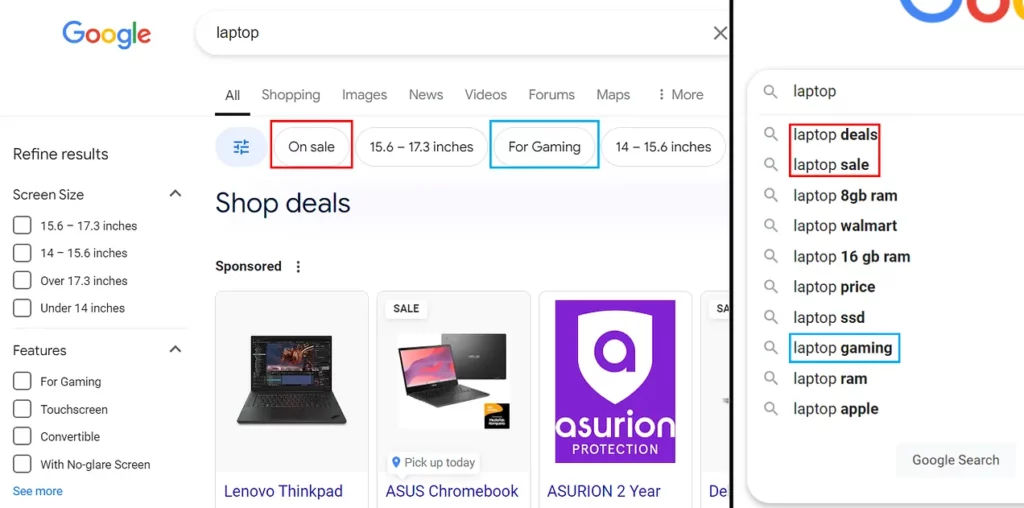
Here are three surprising insights from the data:
During my research, I encountered AI Overviews (AIOs), which are visible on mobile but not on desktop for the analyzed queries. For example, searches like “brown mascara” triggered AIOs that provide detailed information about product attributes.
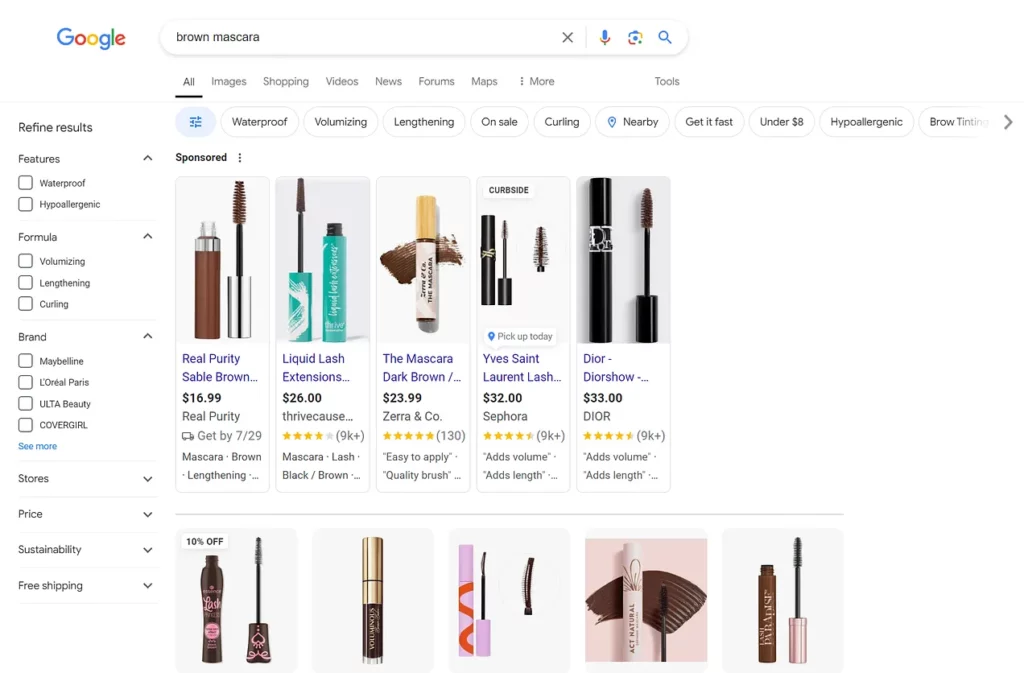
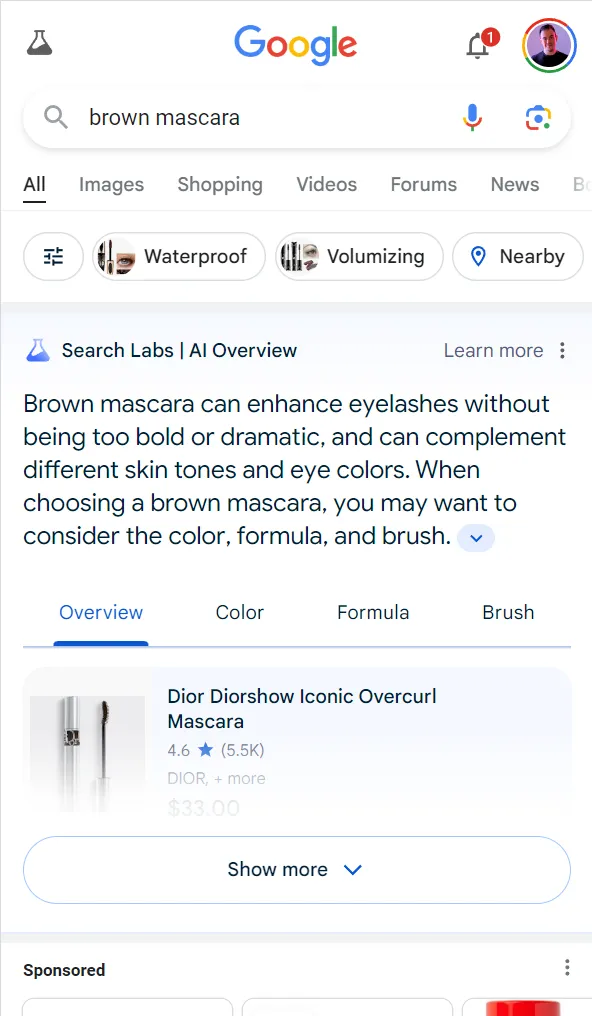
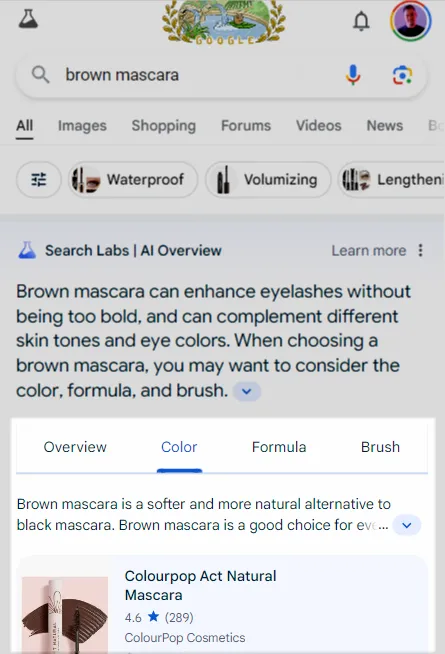
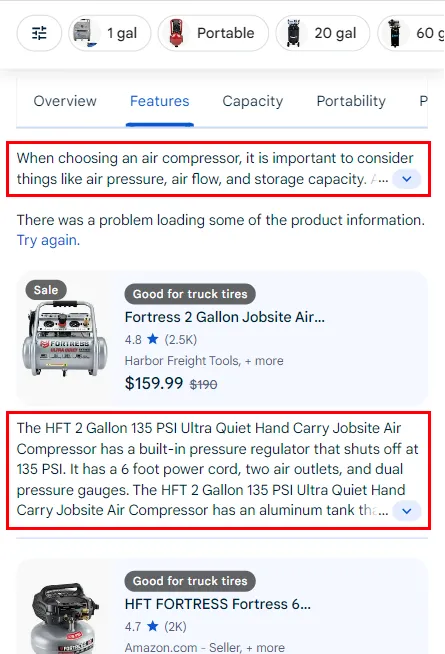
AIOs include additional guidance and information in tabs, as shown in the screenshot below. It’s uncertain whether these AIO tabs are beneficial for driving traffic to review articles or detrimental because they might provide answers directly.
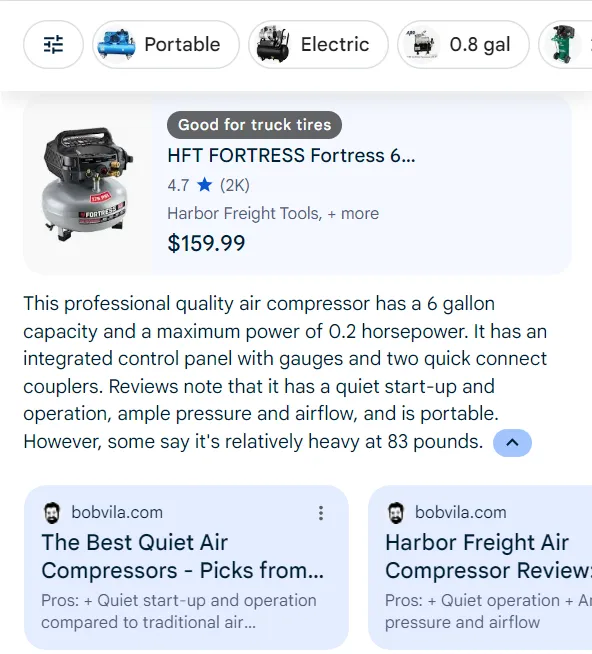
In some cases, such as with the query “air compressor,” refinements appeared within the AIO rather than above it. Clicking an AIO refinement directs users to a new search with the refinement included in the query, such as “air compressor for painting cars.” This search results in a new SERP featuring the refinement in the query, along with another AIO and tabs but without additional refinements. Note that these features might not be available to all users yet, as they were observed while logged into the SGE beta.
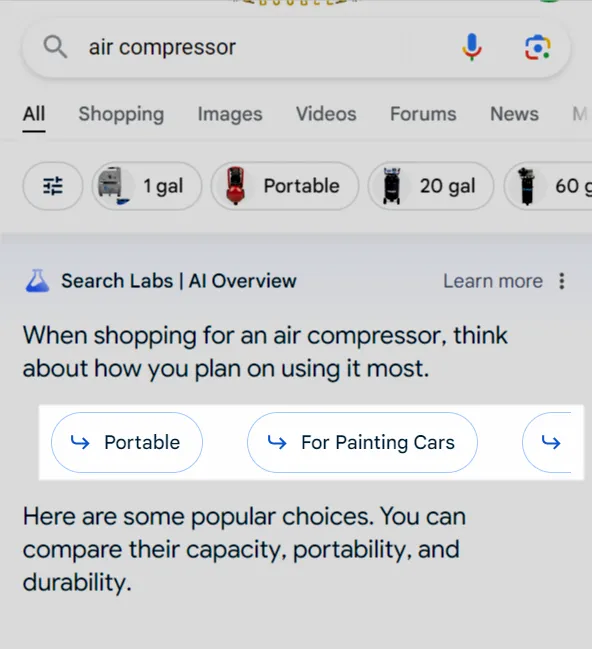
From analyzing over 28,000 shopping queries, I’ve identified five key lessons:
Original news from SearchEngineJournal